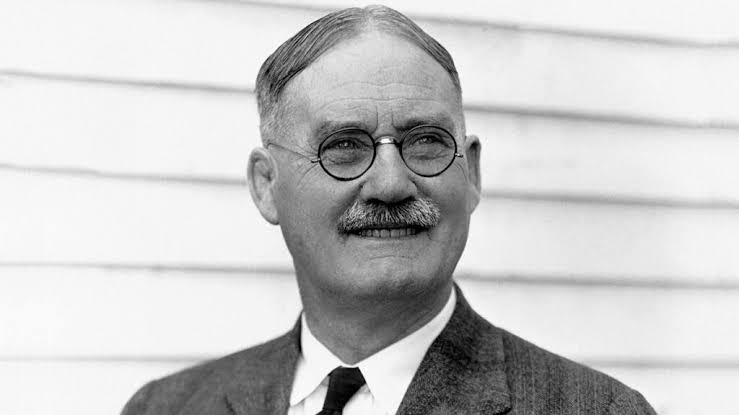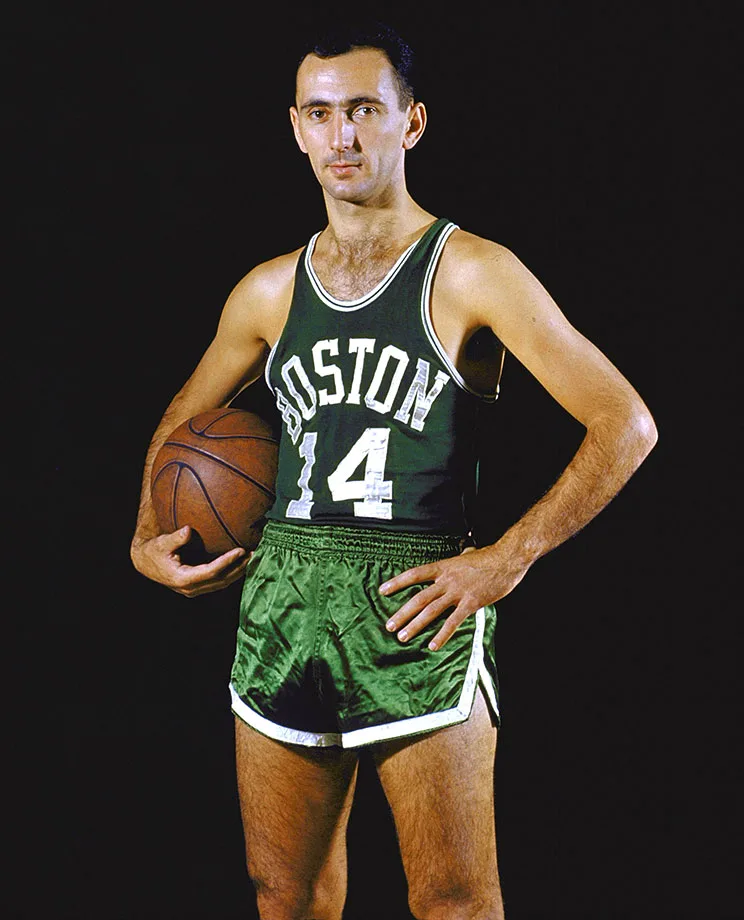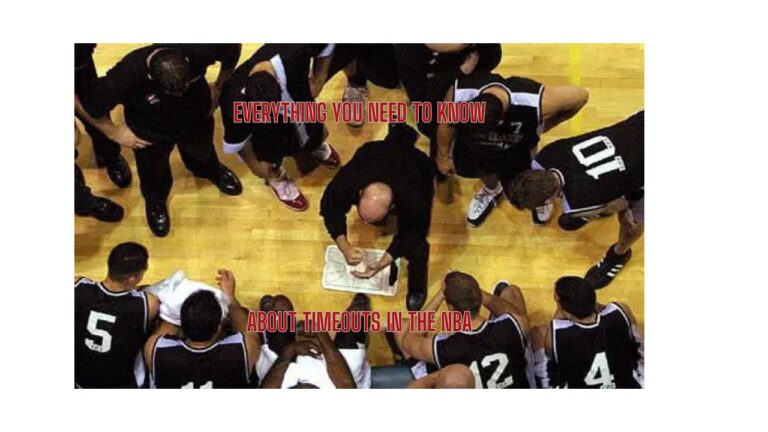
The Evolution of Point Guards in Basketball: From Playmakers to Dual-Threat Maestros
Introduction
The point guard position in basketball has long been considered the heart and soul of a team’s offense. Often referred to as the “floor general,” the point guard is responsible for orchestrating plays, controlling the tempo, and ensuring smooth ball movement. More than just a passer, the point guard is the team’s primary decision-maker, balancing scoring opportunities with playmaking responsibilities.
As basketball has evolved, so too has the role of the point guard. In the early days, traditional point guards were primarily facilitators, focusing on distributing the ball to teammates and setting up plays. However, modern basketball has redefined the position, transforming point guards into dynamic, all-around threats capable of both leading the offense and being prolific scorers. Today’s point guards must excel in ball-handling, shooting, defense, and leadership—making them some of the most versatile players on the court.
This article explores the evolution of the point guard position, from its origins as a pass-first role to the rise of scoring playmakers and the era of positionless basketball. By examining legendary point guards from different generations, we will uncover how the role has changed and what the future holds for this crucial position in the game.
The Traditional Point Guard: The Early Playmakers
Origins of the Point Guard Position
Basketball, since its invention by Dr. James Naismith in 1891, has undergone significant evolution. In its early days, the sport emphasized fundamental passing, teamwork, and structured offensive sets rather than the fast-paced, free-flowing play we see today. The point guard position was born out of necessity—a player needed to be the primary decision-maker, responsible for bringing the ball up the court, initiating plays, and setting up teammates for scoring opportunities.

The traditional point guard was often the smallest and quickest player on the team, tasked with ball-handling duties and play organization. Unlike modern point guards who are expected to contribute heavily to scoring, early point guards were facilitators first, focusing on court vision, passing accuracy, and leadership. The position required high basketball IQ, composure under pressure, and an unselfish mentality.
Early Basketball Strategies and the Point Guard’s Role
In the early to mid-20th century, basketball was a game dominated by set plays and half-court offenses. Teams relied on their point guard to control the game’s tempo, ensuring that possessions were executed efficiently. The concept of a fast break existed but was not as prominent as in later eras. Instead, the focus was on ball movement, spacing, and finding high-percentage shots through careful execution.
The point guard’s role was to distribute the ball, direct teammates, and create scoring chances while minimizing turnovers. Dribbling was far less flashy than it is today, as strict dribbling rules limited how players could move with the ball. Passing was the primary means of advancing the ball up the court, which further emphasized the importance of a skilled point guard who could read defenses and make quick decisions.
One of the defining traits of the traditional point guard was the pass-first philosophy—a mindset that prioritized assists over scoring. While scoring was still part of a point guard’s responsibilities, their primary function was to orchestrate the offense rather than look for their own shot. This approach made point guards the backbone of a team’s offensive system, ensuring that all players were involved and that the offense functioned smoothly.
Notable Traditional Point Guards
Bob Cousy: Revolutionizing Ball-Handling and Passing
Bob Cousy, often regarded as the first great point guard in NBA history, played a pivotal role in shaping the position. As the floor general of the Boston Celtics from the early 1950s to the early 1960s, Cousy brought a level of flair and creativity previously unseen in professional basketball.
What made Cousy revolutionary was his ability to handle the ball and pass with incredible precision. Unlike his contemporaries, who relied on basic chest and bounce passes, Cousy introduced behind-the-back passes, no-look assists, and dribbling maneuvers that allowed him to navigate defenses with ease. His playstyle made the Celtics’ offense dynamic and unpredictable, setting the stage for modern ball-handling and playmaking.

Cousy’s ability to read defenses, anticipate movements, and create scoring opportunities for teammates was unmatched during his time. He led the league in assists for eight consecutive seasons and was instrumental in Boston’s dominance, helping the team win six NBA championships. His impact on the game cannot be overstated—his innovative passing and ball-handling set a new standard for point guards, inspiring future generations to expand their skill sets.
Oscar Robertson: The First All-Around Point Guard (Triple-Double Machine)
While Bob Cousy emphasized playmaking, Oscar Robertson redefined what a point guard could be by proving that they could be dominant scorers as well. Nicknamed “The Big O,” Robertson was a 6’5″ point guard, an unusual size for the position at the time. His combination of size, skill, and basketball intelligence allowed him to excel in every facet of the game.
Robertson became the first player in NBA history to average a triple-double for an entire season (1961–62), showcasing his ability to score, rebound, and assist at an elite level. Unlike traditional point guards who were primarily distributors, Robertson was a legitimate offensive weapon. He could shoot, drive to the basket, and use his physicality to overpower smaller defenders.
Despite his scoring prowess, Robertson never abandoned the traditional responsibilities of a point guard. He remained a gifted passer with exceptional court vision, making his teammates better by finding them in ideal scoring positions. His all-around dominance laid the groundwork for future point guards who would blend scoring and playmaking into a single role. Today’s do-it-all point guards, such as Luka Dončić and Russell Westbrook, owe much of their style to Robertson’s influence.
John Stockton: The Epitome of Assist-Focused Playmaking
If Bob Cousy popularized flashy passing and Oscar Robertson introduced scoring versatility, John Stockton perfected the essence of the pass-first point guard. Playing for the Utah Jazz from 1984 to 2003, Stockton became the NBA’s all-time leader in assists (15,806) and steals (3,265)—records that remain untouched to this day.
Stockton’s game was built on precision, efficiency, and unselfishness. He wasn’t the most athletic or flashy player, but he excelled in basketball fundamentals. His ability to run the pick-and-roll with Karl Malone became one of the most effective offensive strategies in NBA history. Stockton had an innate ability to deliver pinpoint passes, ensuring that his teammates got the best possible shots.
Unlike Robertson, who combined scoring and playmaking, Stockton was a purist when it came to his role as a facilitator. He averaged double-digit assists in numerous seasons while maintaining a high basketball IQ and taking care of the ball. His defensive skills were equally impressive—Stockton’s ability to read passing lanes and disrupt plays made him an underrated defensive force.
Stockton’s impact on the point guard position reinforced the value of high basketball IQ, patience, and efficiency. While today’s game leans more toward scoring guards, his legacy serves as a reminder of the power of elite passing and disciplined play.
The traditional point guard played a crucial role in the early years of basketball, establishing the foundation for the position’s evolution. Players like Bob Cousy, Oscar Robertson, and John Stockton each contributed to the growth of the role—whether through flashy ball-handling, all-around dominance, or textbook playmaking.
As the game evolved, so did the expectations for point guards. The pass-first philosophy that once defined the position began to shift, leading to the emergence of scoring-oriented and hybrid guards. However, the influence of these early pioneers remains strong, as modern point guards still draw inspiration from their court vision, leadership, and strategic decision-making.
In the next section, we’ll explore how the position underwent a transformation in the 1980s and 1990s, ushering in a new era of versatility with Magic Johnson, Isiah Thomas, and Gary Payton leading the charge.
The Transition Era: Magic Johnson and the Rise of Versatility
As basketball evolved from the traditional era of pass-first point guards, the 1980s and 1990s ushered in a new breed of floor generals. This transition period saw the emergence of larger, more athletic, and more versatile point guards who could not only distribute the ball but also dominate in multiple areas of the game. The idea of a point guard being limited to just passing and playmaking was being challenged by a new wave of dynamic players.
Magic Johnson, Isiah Thomas, and Gary Payton each played a significant role in transforming the position, proving that a point guard could be a leader, a scorer, and a defensive force. Their impact laid the groundwork for the modern, hybrid-style point guards we see in today’s game.
Magic Johnson’s Impact on the Position
Bringing Size, Athleticism, and Playmaking to a New Level
Before the arrival of Earvin “Magic” Johnson, point guards were typically small, quick players who focused on running the offense and distributing the ball. Standing at 6’9″, Magic shattered the mold by proving that a point guard could be tall, athletic, and still possess elite playmaking ability.
What set Magic apart was his unique combination of size, court vision, and basketball IQ. He could see over defenses, pass with pinpoint accuracy, and handle the ball with the grace of a smaller guard. Unlike traditional playmakers, Magic was also a legitimate scoring threat—capable of finishing at the rim, operating in the post, and even rebounding like a forward.
His ability to play multiple positions made him one of the most versatile players in NBA history. In the 1980 NBA Finals, as a rookie, he famously played center in place of an injured Kareem Abdul-Jabbar and delivered 42 points, 15 rebounds, and 7 assists to lead the Lakers to a championship—further demonstrating his adaptability.
Showtime Lakers and the Fast-Break Revolution
Magic Johnson’s impact extended beyond individual brilliance—he changed the way the game was played. With his arrival, the Los Angeles Lakers adopted the “Showtime” era, a high-tempo, fast-break offense that emphasized speed, ball movement, and electrifying plays.
Unlike the slow, methodical half-court offenses of previous decades, the Showtime Lakers thrived on quick transitions, pushing the ball up the court, and overwhelming opponents with their relentless pace. Magic was the engine of this style—his ability to grab a rebound, immediately push the ball, and deliver spectacular passes in stride made the Lakers nearly unstoppable in transition.
Magic’s leadership and revolutionary playstyle resulted in five NBA championships (1980, 1982, 1985, 1987, 1988) and three NBA MVPs, solidifying his status as one of the greatest players ever. His influence paved the way for oversized playmakers like LeBron James, Luka Dončić, and Ben Simmons, who now thrive in roles that blend point guard skills with forward-like size.
Isiah Thomas and the Tougher Style of Play
Combining Leadership, Defense, and Scoring Ability
While Magic Johnson represented the flashy, high-paced evolution of the position, Isiah Thomas embodied the gritty, tough-minded, competitive nature of the point guard role in the 1980s. Standing at just 6’1″, Thomas was an undersized guard who made up for his lack of height with relentless energy, elite ball-handling, and an unstoppable will to win.
As the leader of the Detroit Pistons’ “Bad Boys”, Thomas brought a tough, fearless mentality to the court. Unlike traditional point guards who focused primarily on playmaking, Thomas balanced scoring, passing, and defense while also being one of the toughest competitors in NBA history.
Thomas was an elite scorer when needed, capable of taking over games despite his size. One of his most famous performances came in the 1988 NBA Finals, where he scored 25 points in a single quarter on an injured ankle, nearly willing the Pistons to a title. The following year, he led Detroit to back-to-back championships in 1989 and 1990, proving that a point guard could be the driving force of a championship team.
Defensive Intensity and Clutch Performance
Isiah Thomas was also a relentless defender—something that wasn’t traditionally expected from point guards of earlier eras. His ability to disrupt passing lanes, apply on-ball pressure, and lead his team on both ends of the court made him one of the most complete point guards in NBA history.
More importantly, he proved that a point guard didn’t have to fit a single mold. Unlike Magic, who thrived on transition play and size, Thomas succeeded through skill, toughness, and leadership, showing that smaller guards could still dominate in a physical league. His success influenced the next generation of smaller guards like Chris Paul and Allen Iverson, who combined scoring, toughness, and elite playmaking.
Gary Payton: The Birth of the Defensive Playmaker
Defensive Tenacity and Two-Way Dominance
In the 1990s, Gary Payton, nicknamed “The Glove,” took the point guard position to another level by becoming the first true two-way superstar at the position. While many point guards were known for their offensive skills, Payton revolutionized the defensive side of the position, proving that a point guard could be a team’s best defender.
Payton was an elite on-ball defender, known for his aggressive, suffocating defensive pressure. He harassed opposing point guards, forced turnovers, and disrupted entire offenses with his quick hands and physical play. His defensive dominance earned him the 1996 NBA Defensive Player of the Year award—making him the only point guard in history to win the award.
A Playmaker and Scorer with a Competitive Edge
Despite his defensive reputation, Payton was also an excellent passer and scorer. As the leader of the Seattle SuperSonics, he was responsible for running the offense while also being a reliable scoring option. His ability to get to the rim, post up smaller defenders, and hit mid-range jumpers made him a complete offensive player.
Payton’s leadership helped the Sonics reach the 1996 NBA Finals, where he famously locked down Michael Jordan, forcing him into one of his worst Finals performances. Though Seattle fell short, Payton’s legacy as a two-way point guard paved the way for modern defensive-minded playmakers like Jrue Holiday, Marcus Smart, and Patrick Beverley.
The transition era of the 1980s and 1990s saw the point guard position evolve beyond its traditional roots. Magic Johnson revolutionized the game by proving that point guards could be big, versatile playmakers, while Isiah Thomas showcased the importance of toughness, scoring, and leadership. Meanwhile, Gary Payton introduced the concept of a lockdown defensive playmaker, proving that a point guard could dominate on both ends of the floor.
This period set the stage for the modern point guard—no longer limited by size, style, or responsibilities. As the game entered the 2000s, the evolution continued with the rise of scoring-first point guards, leading to the next phase of the position’s transformation.
The Scoring Point Guard Revolution
As basketball evolved into the late 1990s and early 2000s, a major shift occurred in how the point guard position was played. The traditional pass-first philosophy gave way to a scoring-first mentality, with point guards now expected to be offensive focal points rather than just facilitators. This transformation was fueled by players who combined exceptional ball-handling, speed, and scoring ability with the playmaking skills traditionally associated with the position.
The rise of Allen Iverson, Stephon Marbury, Baron Davis, and Steve Nash showcased different variations of the scoring point guard, each leaving a lasting impact on the game. This era paved the way for today’s dominant offensive-minded point guards, such as Stephen Curry, Damian Lillard, and Kyrie Irving.
The 1990s to Early 2000s Shift
Allen Iverson and the Rise of the Scoring-First Point Guard
One of the most influential figures in the scoring point guard revolution was Allen Iverson. Standing at just 6’0”, Iverson defied traditional expectations by proving that a point guard could be a team’s primary scorer and offensive leader.
With his elite ball-handling, speed, and relentless attacking style, Iverson dominated defenses despite being undersized. He could finish at the rim against taller defenders, create his own shot off the dribble, and hit clutch shots under immense pressure. His fearless approach made him one of the most electrifying players in NBA history.
Iverson’s impact on the point guard position was monumental. While he wasn’t a traditional facilitator like Magic Johnson or John Stockton, his ability to score at will forced defenses to adapt, opening opportunities for teammates. His legendary 2000-01 MVP season, where he led the Philadelphia 76ers to the NBA Finals, cemented his status as one of the most dominant scoring guards ever.
More than just a player, Iverson’s cultural influence reshaped the NBA, inspiring a new generation of scoring-first guards who prioritized isolation plays, dribble penetration, and high-volume shooting. Without Iverson, the era of high-scoring, dynamic point guards might not have developed as quickly as it did.
Stephon Marbury and Baron Davis: The Mix of Power and Finesse
While Iverson relied on speed and agility, Stephon Marbury and Baron Davis brought a unique blend of power and finesse to the point guard position.
- Stephon Marbury combined elite ball-handling, scoring, and strength, allowing him to attack the basket aggressively while still maintaining the ability to set up teammates. Playing for teams like the Minnesota Timberwolves, New Jersey Nets, and New York Knicks, Marbury embodied the scoring playmaker archetype, balancing his own offensive production with solid passing skills.
- Baron Davis, on the other hand, was a more physical and explosive version of the scoring point guard. Known for his dunks, crossover dribbles, and ability to absorb contact, Davis was an offensive powerhouse who thrived in transition. His leadership in the 2007 “We Believe” Golden State Warriors playoff run—where the 8th-seeded Warriors upset the top-seeded Dallas Mavericks—showcased how a scoring-first point guard could dominate in the postseason.
Both Marbury and Davis helped push the idea that point guards didn’t need to be purely facilitators—they could be aggressive scorers who dictated the offense through their own scoring ability rather than just passing.
Steve Nash and the Offensive Maestro Approach
The “Seven Seconds or Less” Phoenix Suns Offense
While Iverson, Marbury, and Davis emphasized isolation scoring, Steve Nash redefined the scoring point guard by blending efficient playmaking with high-scoring efficiency. His tenure with the Phoenix Suns (2004-2012) under coach Mike D’Antoni gave rise to the revolutionary “Seven Seconds or Less” offense, which prioritized:
- Fast-paced transition play
- High-volume three-point shooting
- Quick decision-making
- Spaced-out offensive sets
Nash’s role in this system was game-changing. Unlike previous point guards who either passed or scored, Nash did both at an elite level. He led the NBA in assists multiple times while also being an efficient shooter, boasting 50/40/90 shooting splits (50% FG, 40% 3PT, 90% FT) across multiple seasons—something unheard of for point guards before his era.
His ability to make instinctive, split-second decisions created one of the most potent offenses in NBA history, paving the way for the modern high-tempo, three-point-heavy game we see today.
High-Tempo Play and Efficient Scoring While Still Leading in Assists
Unlike Iverson or Marbury, Nash wasn’t a ball-dominant isolation scorer—he thrived on ball movement, pick-and-roll execution, and making teammates better. However, he was also a lethal shooter, capable of pulling up from deep, finishing inside, or hitting mid-range jumpers with precision.
Nash’s back-to-back MVP awards (2005 and 2006) validated the idea that a point guard could still be the centerpiece of an offense without dominating the ball through isolation plays. Instead, he relied on quick ball movement, elite shooting, and high basketball IQ—a model that influenced today’s pass-first scoring guards, such as Trae Young and Tyrese Haliburton.
The scoring point guard revolution of the late 1990s and early 2000s completely redefined the expectations for the position.
- Allen Iverson showed that a point guard could be the primary scorer without needing to be a traditional facilitator.
- Stephon Marbury and Baron Davis introduced a blend of physicality and finesse, proving that point guards could dominate in multiple ways.
- Steve Nash provided a new blueprint for offensive excellence—balancing elite passing with hyper-efficient scoring, leading to the modern three-point-heavy, fast-paced NBA style.
This era directly influenced today’s generation of score-first hybrid guards, like Stephen Curry, Russell Westbrook, and Damian Lillard, who have taken point guard scoring to even greater heights. In the next section, we’ll explore how the modern era of point guards has embraced three-point shooting, hybrid skills, and positionless basketball, further changing the game forever.
The Modern Point Guard: Dual-Threat Superstars
The modern era of basketball has redefined the point guard position into a blend of elite scoring, playmaking, and versatility. No longer confined to traditional roles, today’s point guards must be capable of shooting from deep, creating shots off the dribble, facilitating offense, and even rebounding at a high level.
This transformation has been driven by the three-point revolution, which has changed how teams space the floor, and the emergence of hybrid playmakers who can dominate in multiple facets of the game. Players like Stephen Curry, Damian Lillard, Chris Paul, Russell Westbrook, and Luka Dončić have reshaped what it means to be a point guard in the modern NBA.
The Three-Point Revolution and Spacing the Floor
How Stephen Curry Changed the Game with Deep-Range Shooting
No player has influenced modern basketball more than Stephen Curry. His ability to shoot from anywhere on the court with elite accuracy and quick release has completely transformed offensive strategy.
Before Curry, most point guards operated primarily inside the three-point line, using mid-range jumpers, pick-and-rolls, and dribble penetration to score. Curry, however, extended the game’s boundaries by:
- Shooting from 30+ feet with efficiency.
- Forcing defenses to guard well beyond the three-point arc.
- Using off-ball movement to create open looks.
His success with the Golden State Warriors’ motion offense proved that a point guard could lead an offense through spacing, shooting, and gravity, rather than just traditional playmaking.
Curry’s impact resulted in the NBA shifting toward more three-point-heavy offenses, influencing a generation of players who now prioritize deep-range shooting and floor spacing.
Damian Lillard and the Evolution of Long-Range Shot Creation
While Curry revolutionized the three-point shot, Damian Lillard took it to another level by incorporating elite shot creation from deep. Unlike Curry, who often scores through off-ball movement, Lillard thrives in isolation and pick-and-roll situations, using his explosive first step to create space for deep jumpers.
Lillard’s clutch performances and ability to shoot from the logo forced defenses to adjust, much like Curry, but with a more isolation-heavy approach. His game represents the next step in the point guard evolution—one where long-range shooting isn’t just a tool but a primary weapon for offensive creation.
The Hybrid Playmaker-Scorer Model
Chris Paul: The Bridge Between Old-School and Modern Point Guards
In the midst of the three-point revolution, Chris Paul has remained one of the last great traditional playmakers, balancing old-school fundamentals with modern efficiency.
Paul, known for his:
- Elite court vision and passing.
- Mid-range efficiency despite the NBA’s shift to threes.
- Leadership and ability to elevate teammates.
Unlike Curry and Lillard, Paul’s offensive style is less reliant on three-pointers and more focused on precision passing, controlling tempo, and scoring efficiently in the mid-range. His ability to adapt to the evolving game has allowed him to remain a dominant force, making him the perfect bridge between past and present point guard styles.
Russell Westbrook’s Athleticism and Triple-Double Dominance
While some modern point guards focus on shooting, Russell Westbrook has redefined the position with his explosiveness, rebounding, and all-around statistical dominance.
His triple-double mastery—where he averaged a triple-double for multiple seasons—showcased how a point guard could impact the game in ways previously unseen. Unlike traditional point guards who relied on passing and shooting, Westbrook:
- Uses his athleticism to attack the rim relentlessly.
- Is one of the best rebounding guards in history.
- Plays at an unmatched pace, pushing defenses to their limits.
Westbrook’s aggressive, attack-first mentality has inspired a new wave of athletic, scoring-first point guards who blend speed, power, and playmaking into their game.
Luka Dončić and the Rise of Oversized Playmaking Guards
Taking inspiration from Magic Johnson, the newest evolution of the point guard comes in the form of oversized, do-it-all playmakers like Luka Dončić. At 6’7”, Luka represents the modern “positionless” style of basketball, where point guards are no longer defined by height or traditional skills.
Luka’s game is unique because he:
- Plays at his own pace, using skill over athleticism.
- Combines elite scoring with elite passing.
- Can operate as a point guard while also rebounding like a forward.
His ability to control an entire offense while being a primary scorer, facilitator, and rebounder makes him one of the most unique point guards in NBA history. He represents the future of the position, where size, skill, and versatility are just as important as traditional point guard duties.
The modern era of point guards has completely transformed how the game is played.
- Stephen Curry and Damian Lillard revolutionized the three-point shot, making deep shooting a necessity.
- Chris Paul proved that traditional playmakers could still thrive in a fast-paced, three-point-heavy NBA.
- Russell Westbrook changed how a point guard could impact the game through athleticism and all-around dominance.
- Luka Dončić showcased the next evolution—oversized, do-it-all playmakers who blur positional lines.
As the NBA continues to evolve, the point guard position will only become more dynamic. With shooting, size, athleticism, and versatility at the forefront, the next generation of point guards will likely continue to push the boundaries of what’s possible on a basketball court and that is what we will be taking a lot at next.
The Future of the Point Guard Position: Positionless Basketball
As basketball continues to evolve, the point guard position is becoming less defined by traditional roles. The modern game is increasingly embracing positionless basketball, where players are no longer confined to set positions but rather operate based on their skill sets.
This shift has led to the emergence of playmaking forwards, oversized guards, and hybrid scorers who challenge the classic definitions of the point guard. Players like LeBron James, Luka Dončić, and Shai Gilgeous-Alexander represent this new wave, proving that playmaking is no longer exclusive to smaller, pass-first guards.
Looking ahead, the future of the point guard will likely be shaped by a combination of size, athleticism, and versatility, blending the traditional responsibilities of a floor general with the scoring prowess of an elite offensive weapon.
How the Point Guard Role Continues to Evolve
Players Who Defy Traditional Positions (e.g., LeBron James as a Point-Forward)
One of the biggest shifts in recent years has been the emergence of point-forwards—players who, despite not being traditional point guards, take on primary ball-handling and playmaking responsibilities.
LeBron James is the best example of this evolution. Standing at 6’9” and 250 pounds, he possesses the passing vision of a point guard but the size and scoring ability of a forward. Throughout his career, he has often served as his team’s primary facilitator, proving that traditional height and positional labels are becoming obsolete.
Other examples include:
- Giannis Antetokounmpo: A dominant forward who often initiates offense in transition.
- Jokic as a Playmaking Center: The Denver Nuggets’ offense runs through Nikola Jokić, a center with elite passing skills similar to a point guard.
- Kevin Durant: While primarily a scorer, Durant often handles the ball and creates offense for teammates like a lead guard.
This trend suggests that future point guards may not be small, quick players but rather bigger, more versatile stars who can fill multiple roles depending on the team’s needs.
The Importance of Versatility in Modern Offenses
The reason for this shift toward positionless basketball is the growing emphasis on versatility in offensive systems. In today’s game, teams no longer rely on one primary ball-handler to control the game. Instead, offenses are built around multiple playmakers who can share responsibilities, making them harder to defend.
This style of play is reflected in:
- Multi-ball-handler lineups, where teams run offenses through multiple guards/wings.
- Spacing and shooting, allowing different players to initiate plays.
- Positionless defensive schemes, where switching and adaptability are more valuable than size-based matchups.
As the game continues to evolve, future point guards will need to be multi-skilled players who can score, pass, rebound, and defend across multiple positions.
Upcoming Stars Redefining the Role
Several young point guards are already pushing the boundaries of the position, showcasing unique blends of scoring, playmaking, and size.
Ja Morant: The Explosive Playmaker
Ja Morant represents the next generation of athletic, scoring-first guards who dominate with speed and creativity. He thrives in transition, using his elite athleticism, court vision, and finishing ability to attack defenses relentlessly.
Key aspects of Morant’s game:
- Elite ball-handling and speed make him a nightmare in fast breaks.
- Unreal explosiveness, finishing above the rim despite being only 6’2”.
- Playmaking ability, balancing scoring with setting up teammates.
Morant’s game reflects a modern version of prime Derrick Rose, with a focus on relentless attacking and highlight-reel finishes.
Shai Gilgeous-Alexander: The Oversized, Efficient Guard
Standing at 6’6” with a 7-foot wingspan, Shai Gilgeous-Alexander (SGA) is redefining what it means to be a lead guard. Unlike traditional fast-paced point guards, SGA plays at a deliberate, methodical pace, using footwork, size, and elite shot-creation to break down defenses.
Why SGA is a unique point guard:
- Size and length allow him to defend multiple positions.
- Efficient mid-range and three-point shooting make him a dangerous scorer.
- Calm, patient playstyle, similar to Luka Dončić, allows him to control the tempo.
SGA’s rise suggests that the future of point guards may lean toward bigger, more versatile scorers rather than traditional playmakers.
Cade Cunningham: The Do-It-All Point Forward
Cade Cunningham represents the next phase of the positionless point guard—a 6’7” playmaker who can run an offense while also scoring at a high level.
Cunningham’s skill set includes:
- Excellent vision and passing despite his size.
- Ability to play multiple positions, from point guard to small forward.
- Smooth, controlled playstyle, combining athleticism with high basketball IQ.
His game is a blend of Luka Dončić and Grant Hill, showing that future point guards will likely be taller, stronger, and more well-rounded than ever before.
What’s Next? The Next Evolution of Point Guards
As the NBA continues to evolve, there are several key questions about where the point guard position is headed:
Will the Game Shift Toward Even Bigger, More Athletic Guards?
With players like Luka Dončić, Cade Cunningham, and Shai Gilgeous-Alexander leading the charge, the 6’6” and above point guard could become the new norm. Their ability to:
- See over defenses.
- Guard multiple positions.
- Combine playmaking with elite scoring
…makes them more valuable than smaller, traditional guards.
That said, there will always be a place for explosive, smaller guards like Ja Morant and Trae Young, proving that skill and creativity can still dominate.
The Balance Between Traditional Playmaking and Scoring Dominance
The biggest challenge for future point guards will be balancing scoring with playmaking. The game is trending toward score-first guards, but teams still need elite facilitators to create for teammates.
Will the next generation of guards be able to combine the best of both worlds—becoming both elite scorers and elite playmakers at the same time?
In Conclusion
The point guard position has undergone a dramatic transformation over the decades, evolving from pass-first floor generals to scoring machines and all-around superstars. What started as a role focused on orchestrating offenses and distributing the ball has expanded to include elite scoring, deep-range shooting, defensive versatility, and even rebounding dominance.
- The early era was defined by playmakers like Bob Cousy, Oscar Robertson, and John Stockton, who prioritized passing and game management.
- The transition era saw the rise of Magic Johnson, Isiah Thomas, and Gary Payton, who blended traditional point guard duties with size, athleticism, and defense.
- The scoring revolution brought players like Allen Iverson and Steve Nash, who redefined the position with scoring-focused and high-tempo play.
- The modern era is dominated by Stephen Curry, Damian Lillard, Luka Dončić, and Russell Westbrook, proving that point guards can score, pass, and impact the game in multiple ways.
- The future is heading toward positionless basketball, where oversized playmakers like Shai Gilgeous-Alexander, Cade Cunningham, and Ja Morant continue to expand the role.
The Importance of Adaptability in the Ever-Changing Game
One key takeaway from this evolution is that adaptability is crucial. Players who can adjust their skill sets to match the game’s trends will thrive, while those who remain rigid in their approach risk becoming obsolete.
- In today’s three-point-heavy era, guards must develop a reliable shot to space the floor.
- Athleticism and versatility have become crucial, allowing point guards to contribute beyond just passing.
- Teams increasingly prioritize multi-dimensional guards who can lead the offense, defend multiple positions, and serve as a primary scorer when needed.
Final Thoughts on the Future of Point Guards
As the game continues to evolve, the point guard position will remain one of the most influential in basketball. Whether through deep shooting, explosive athleticism, or oversized playmaking, future generations will continue pushing the boundaries of what a point guard can be.
One thing is certain: the best point guards of the future won’t just be facilitators or scorers—they’ll be complete basketball players capable of adapting to any situation, leading their teams, and shaping the next era of the game.



